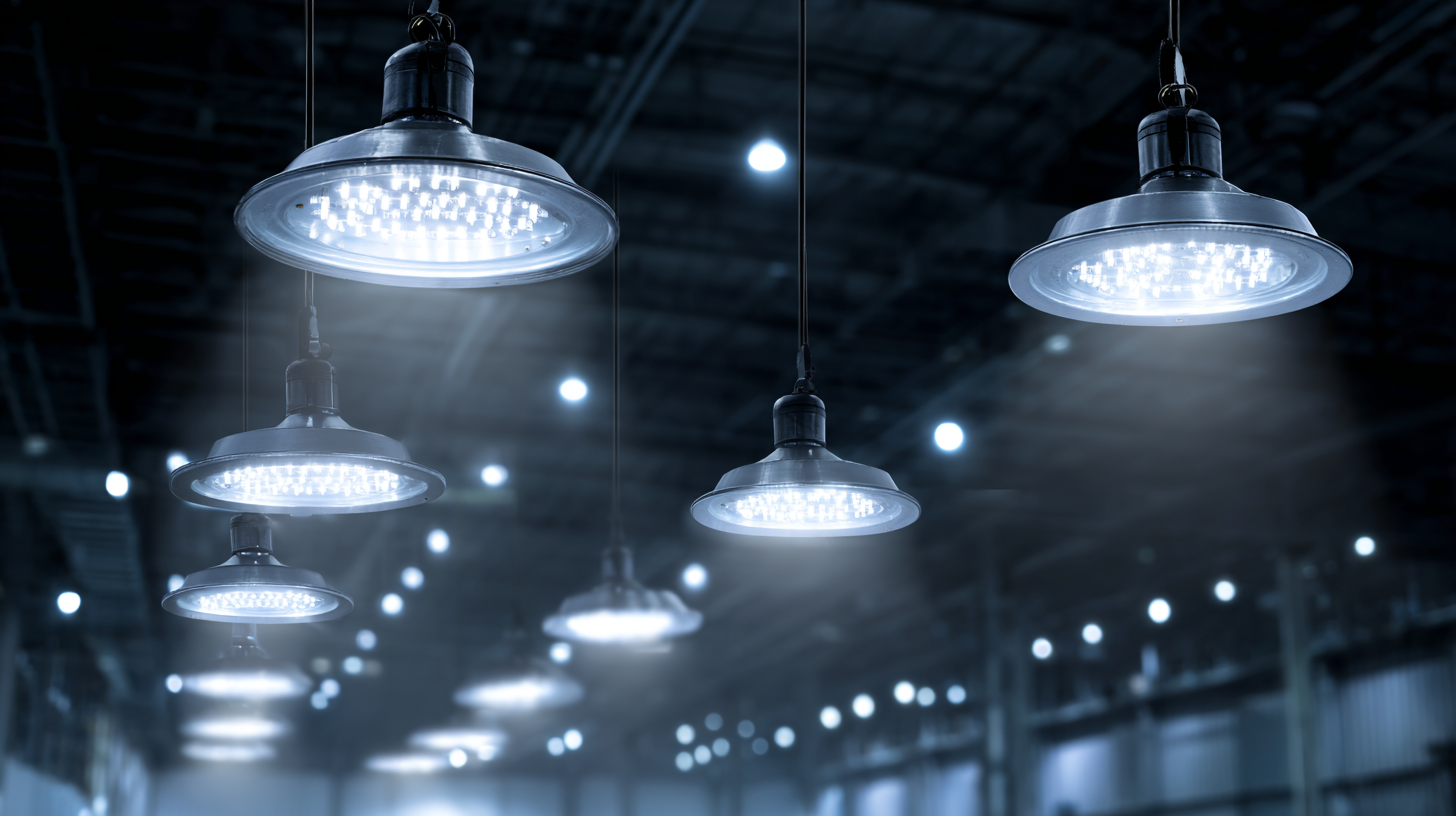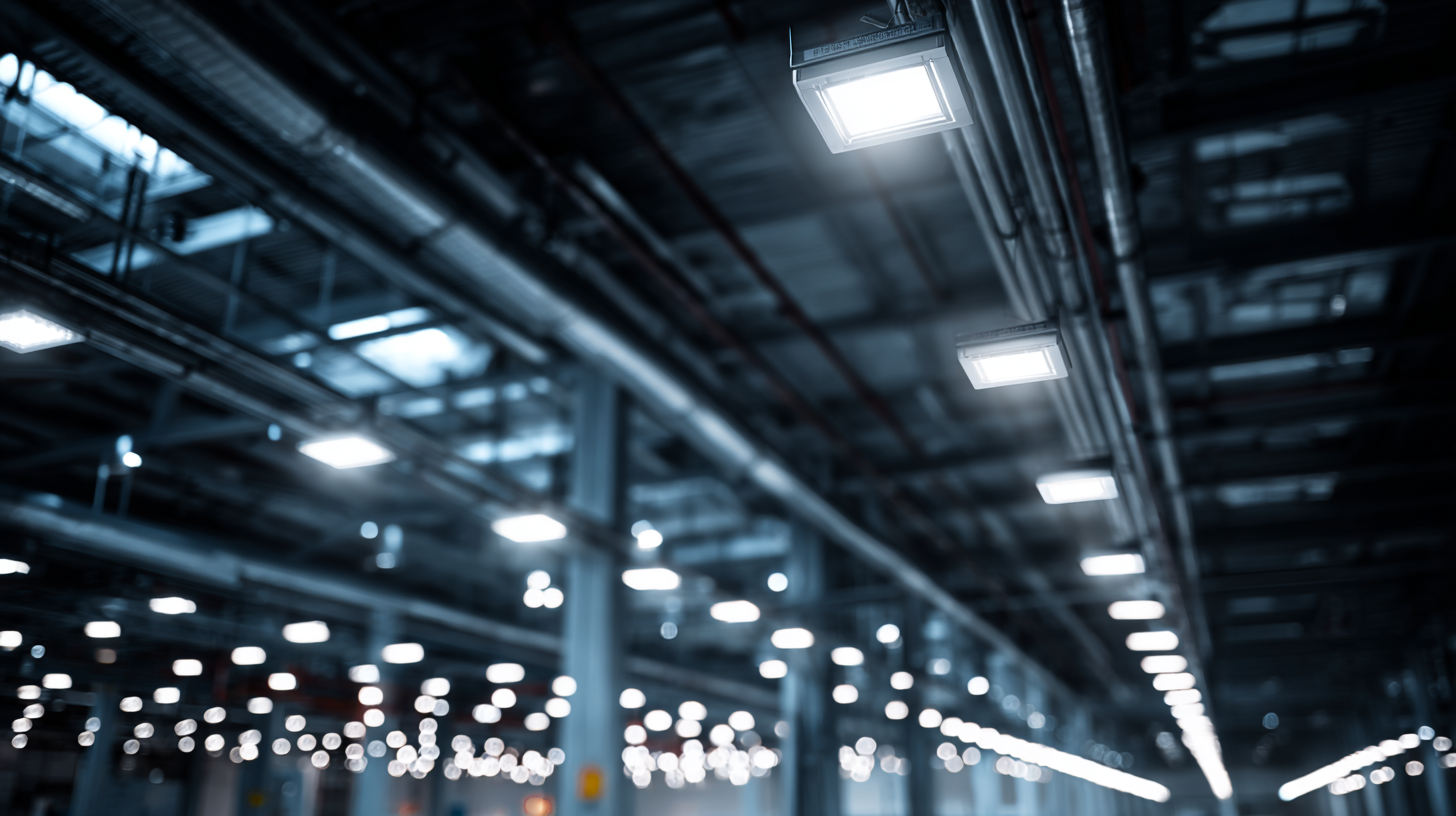Ultimate Checklist for Choosing the Best Industrial Led Lighting Solutions
When it comes to optimizing workplace efficiency and safety in industrial settings, the choice of lighting plays a crucial role. Industrial LED lighting solutions have rapidly gained popularity due to their energy efficiency, longevity, and low maintenance costs. However, selecting the most suitable lighting options can be a daunting task, given the myriad of products available on the market today.
This ultimate checklist serves as a comprehensive guide to help you navigate the complexities of choosing the best industrial LED lighting solutions for your specific needs. By focusing on key strategies that encompass factors like brightness, energy consumption, color temperature, and durability, this guide will empower you to make informed decisions that enhance productivity and create a safer work environment.

Let's delve into the essential elements that will enable you to transform your industrial space with the perfect LED lighting.
Key Factors to Consider When Selecting Industrial LED Lighting Solutions
When selecting industrial LED lighting solutions, several key factors come into play to ensure optimal performance and energy efficiency. First and foremost, consider the specific lighting needs of your facility. Different industrial environments, whether a warehouse, manufacturing plant, or an assembly line, necessitate varying levels of brightness and light distribution. Analyzing the layout and the tasks performed in each area will help in choosing fixtures that provide adequate illumination, ensuring safety and productivity.
Another crucial factor is energy efficiency. Industrial LED lights are known for their longevity and reduced energy consumption compared to traditional lighting systems. Look for products with high lumens per watt ratings to maximize the effectiveness of your investment. Additionally, consider the total cost of ownership, including maintenance and replacement costs, to make an informed decision that aligns with your budget and sustainability goals. Selecting solutions with smart technology features, such as dimming capabilities and motion sensors, can further enhance energy efficiency while providing flexibility in lighting management.

Understanding Industry Standards for LED Lighting Performance
When selecting industrial LED lighting solutions, understanding industry standards for LED lighting performance is crucial. The Illuminating Engineering Society (IES) provides guidelines such as the IES LM-79 standard, which outlines the testing methods for electrical and photometric performance of LED products. According to a report by the Energy Department, adhering to these standards can enhance energy efficiency by up to 50% compared to traditional lighting systems, ultimately reducing operational costs significantly for businesses.
Moreover, the efficacy of LED lighting is often measured in lumens per watt (lm/W). The IES recommends a minimum requirement of 100 lm/W for industrial applications to ensure adequate illumination while minimizing energy consumption. Reports indicate that high-quality LED fixtures can achieve efficacy ratings between 120 lm/W and 180 lm/W. Such performance not only aids in creating safer and more productive work environments but also aligns with sustainability goals, as companies are increasingly held accountable for their energy usage and environmental impact. By prioritizing established industry standards, businesses can make informed decisions that support both operational efficiency and ecological responsibility.
Ultimate Checklist for Choosing the Best Industrial LED Lighting Solutions
| Criteria | Description | Industry Standard | Performance Metric |
|---|---|---|---|
| Lumen Output | Brightness level emitted by the LED light. | IES LM-79 | Measured in lumens (lm). |
| Efficiency | Ratio of light output to power input. | IES LM-80 | Measured in lumens per watt (lm/W). |
| Color Rendering Index (CRI) | Indicates how accurately colors are rendered. | ANSI C78.377 | Scale from 0 to 100. |
| Color Temperature | The hue of the light produced, measured in Kelvins. | CCT (Correlated Color Temperature) | Measured in Kelvins (K). |
| Lifespan | As rated by the manufacturer for how long the light will last. | L70 Rating | Measured in hours. |
| Dimmability | Ability of the fixture to be dimmed. | N/A | Percentage of dimming capability. |
Evaluating Energy Efficiency and Cost Savings in LED Lighting
When considering industrial LED lighting solutions, energy efficiency and cost savings are paramount. Reports indicate that LED lighting can consume up to 75% less energy compared to traditional incandescent bulbs, making it a wise choice for businesses seeking to reduce utility costs. For instance, a recent study by the U.S. Department of Energy highlights that switching to LED technology in industrial settings can lead to an average savings of $2,200 per year per 1,000 fixtures, underscoring the financial benefits of this transition.
Tip: When evaluating LED options, look for products that feature the ENERGY STAR label, which guarantees high energy efficiency and performance standards. Additionally, consider the lumens-per-watt rating; a higher rating indicates better energy efficiency, allowing you to maximize output while minimizing energy consumption.
Another factor to consider is the lifespan of LED lights, which can exceed 50,000 hours. This longevity translates into fewer replacements and reduced maintenance costs. Research from the Lighting Research Center shows that while the initial cost of LED fixtures may be higher, the long-term savings on energy bills and maintenance result in lower total ownership costs over time.
Tip: Always evaluate the total cost of ownership (TCO) when budgeting for lighting solutions, as this approach enables you to assess not just the purchase price but the cumulative savings over the fixture's lifespan.
Ultimate Checklist for Choosing the Best Industrial LED Lighting Solutions
This chart represents the energy efficiency (in lumens per watt) and potential cost savings for different types of industrial LED lighting solutions. The data compares three common applications: Warehouse, Factory, and Outdoor Lighting.
Comparing Different Types of Industrial LED Fixtures
When it comes to selecting the right industrial LED fixtures, understanding the different options available is crucial. Various models exhibit unique efficiencies and benefits that can significantly impact your operations. For instance, solid-state lighting technologies such as lognormal and Weibull distributions help illustrate the performance characteristics of different products. Efficient lighting solutions not only enhance productivity but also contribute to energy savings and sustainability in the long run.
Tip: Look for LED fixtures that have been independently tested for efficiency and durability. Consider models that show a clear advantage in longevity and output quality. Additionally, analyze the environmental impact of your chosen lighting system, as this can affect your company’s overall sustainability goals.

Another critical aspect to consider when comparing lighting options is the spectrum of the light produced. Certain LED systems are designed to optimize plant growth by providing specific wavelengths, which can be essential in agricultural applications. Understanding such features will help you choose fixtures that meet both your lighting and productivity needs.
Tip: Prioritize fixtures that offer tunable light spectra, especially if your operations involve sensitive environments like greenhouses. This flexibility allows for optimal light management, adapting to various growth stages or specific requirements of different crops.
Assessing Durability and Maintenance Needs of LED Lighting Systems
When selecting industrial LED lighting solutions, assessing the durability and maintenance needs is crucial for ensuring longevity and optimal performance. Industrial environments often present challenging conditions, including temperature fluctuations, moisture, and exposure to dust and chemicals. Therefore, it’s essential to choose LED fixtures designed to withstand these elements. Look for lights that have a high Ingress Protection (IP) rating, which indicates their resistance to dust and water. Additionally, rugged construction and materials such as aluminum or polycarbonate can enhance their ability to endure harsh conditions.
Maintenance is another critical factor to consider when adopting LED lighting in industrial settings. While LEDs generally offer lower maintenance than traditional lighting solutions, proper care is necessary to maximize their lifespan. Implementing a regular inspection schedule can help identify any issues early on. Consider fixtures that feature modular designs, allowing for easy replacement of components rather than the entire unit, simplifying repairs. Furthermore, choosing products from reputable manufacturers can provide warranties that assure reliability and performance, reducing downtime and maintenance costs effectively.
Quality Commercial LED Lighting specializing in LED Tubes, LED Bulbs, LED Troffers, LED Door Kits, LED Retrofit Kits, LED Panels, LED Spot Lights, LED Wall Packs, LED Lamps, LED Drivers, LED Accessories, LED Lights, LED Sales, and LED Manufacturing. Headquartered in Atlanta, Georgia, USA.
